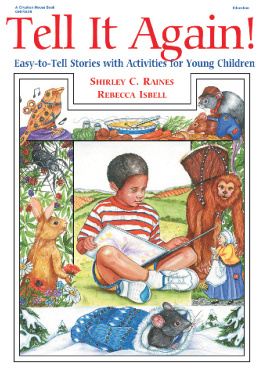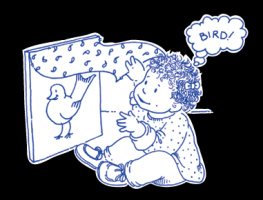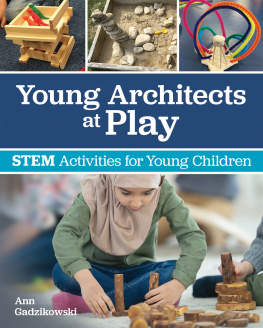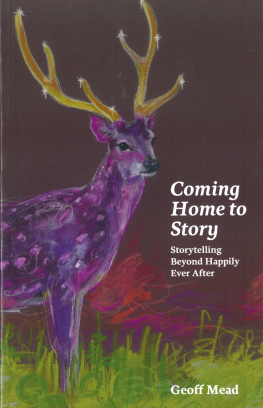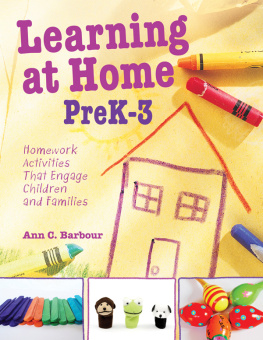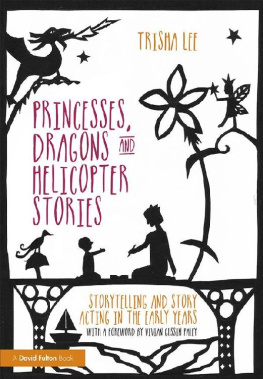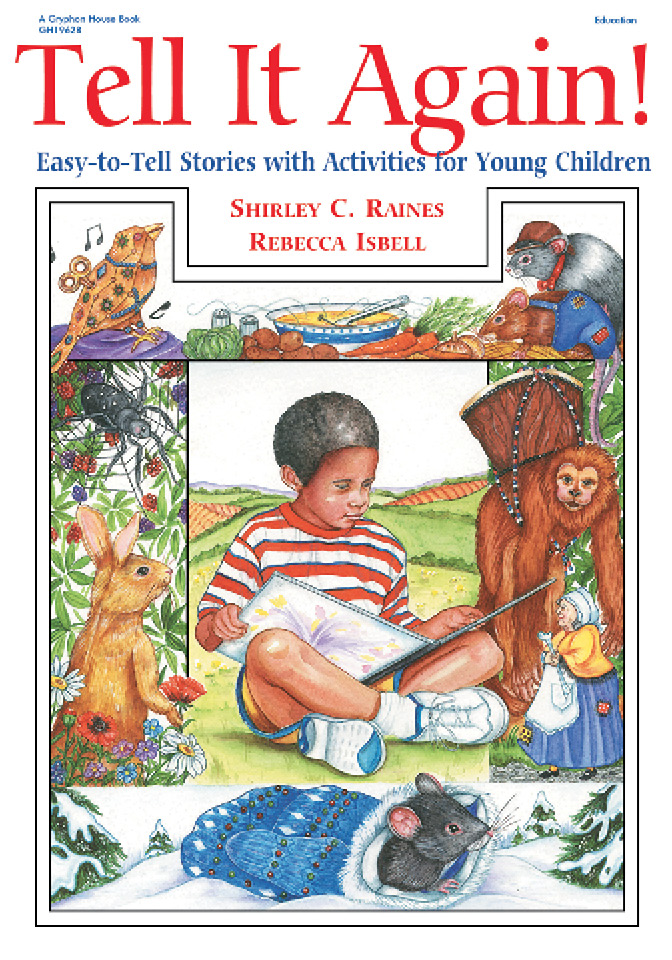Contents
Big City Mouse,
Small Town Mouse
Could Be Worse!
By James Stevenson
The Flying Contest
or How Kunibre Became King of the Birds
Easy-to-Tell Stories with Activities for Young Children
Shirley C. Raines
Rebecca Isbell
Illustrations by Joan Waites
gryphon house
Silver Spring, Maryland
Other Gryphon House books by the authors
by Shirley Raines
Story S-t-r-e-t-c-h-e-r-s
More Story S-t-r-e-t-c-h-e-r-s
Story S-t-r-e-t-c-h-e-r-s for the Primary Grades
450 More Story S-t-r-e-t-c-h-e-r-s for the Primary Grades
Never, EVER, Serve Sugary Snacks on Rainy Days
by Rebecca Isbell
The Complete Learning Center Book
Entire text only of COULD BE WORSE! by James Stevenson. Text copyright 1987 by James Stevenson. Reprinted by permission of Greenwillow Books, a division of William Morrow and Company, Inc.
Permission to use SPIKE THE SPARROW granted by Piccadilly Press Ltd. Text and illustrations copyright Tony Maddox, 1989. First published in hardback by Piccadilly Press Ltd.
Permission to use THE LITTLE WOMAN WANTED NOISE granted by Checkerboard Press.
Copyright 1999 Shirley Raines and Rebecca Isbell
Published by Gryphon House, Inc.
10770 Columbia Pike, Suite 201, Silver Spring MD 20901
World Wide Web: www.gryphonhouse.com
All rights reserved. No part of this publication may be reproduced, stored in a retrieval system or transmitted in any form or by any means, electronic, mechanical, photocopying, recording or otherwise, without the prior written permission of the publisher.
Reprinted July 2010
Library of Congress Cataloging-in-Publication
Raines, Shirley C.
Tell it again! : easy-to-tell stories with activities for young
children / Shirley C. Raines, Rebecca Isbell.
p. cm.
Includes bibliographical references and index.
ISBN 978-0-87659-200-7
1. Storytelling. 2. Childrens literatureStudy and teaching.
3. Early childhood educationActivity programs. I. Isbell,
Rebecca T. II. Title.
LB1042.R25 1999
372.677--dc21 99-13675
CIP
To
Teachers and Librarians,
Mamas and Papas,
Grandfathers and Grandmothers,
Great Aunts and Great Uncles,
And Elders far and wide.
To storytellers everywhere
Who invite children
To sit by their sides.
To Lazy Jack
And Knee-High Man,
To Johnny-Cake
And Pancakes in a Pan,
To Kings and Queens
And Princesses and Such,
To goodness over wickedness,
To truth over liars.
To storytellers everywhere
Enjoy a page or two.
Then pass it on.
As Tellers of the Story,
Enjoy the magic, the tricksters, and the dreams...
The lessons and the schemes.
We have but one request,
Tell it again!
And tell it to the young.
Shirley Raines
Introduction
The beautiful swan was once an ugly duckling. The boy who cried wolf had no help when the real wolf came. The modest turtle won the race while the boastful rabbit bragged about his speed. Some of lifes greatest lessons are remembered best through the recollection of stories heard in childhood.
Storytelling involves three essential elements: the story, the teller, and the listener. A well-selected story told by an effective storyteller captivates young listeners attention and the three elements work in harmony. The gifts of storytelling are many, including moments filled with the wonder and excitement of stories, universal truths and morals to remember and use throughout life, and the special bond that connects the storyteller and the listener.
The Power of Storytelling
Storytelling is a powerful medium. A well-told story can inspire action, foster cultural appreciation, expand childrens knowledge, or provide sheer enjoyment. Listening to stories helps children understand their world and how people relate to each other in it.
When children listen to stories, they use their imaginations. They picture nail soup or the teeny tiny woman from the tellers vivid descriptions. This creativity is dependent upon the storytellers lively telling of the story and the listeners active interpretation of what is heard. The more delightful the story and the storyteller, the more the children get out of the whole experience.
The storytelling experience also helps young children develop an appreciation of the story form. Because children are more involved in creating the pictures of the story, they are more likely to remember the
characters, the sequence, and the moral of the story. Storytelling can motivate young children to explore various types of literature and become a storyteller, story reader, and story writer.
How to Select Stories to Tell Young Listeners
We wrote this book because we found few books devoted to storytelling for young children. Storytellers often have a difficult time finding the right stories for young children. We selected the stories for this book because they are excellent tales for telling that fit the developmental needs of young children.
Excellent stories for young listeners often have one or more of the following characteristics:
Easy-to-follow sequence;
Repetitive words and phrases;
Predictable and cumulative tales;
Action-packed;
Often humorous;
Interesting and entertaining happenings;
Exciting ending with an appropriate conclusion; and
Clear message or moral.
General Storytelling Tips
The following storytelling tips apply to the telling of most stories to young children.
Observe the young children during the telling. Adjust and make clarifications as needed.
Encourage interaction and participation.
Modify the pace and length to match the experiential and developmental level of the children in the audience.
Use voice variations, facial expressions, gestures, and repetitive phrases to draw the young listener into the story.
Use appropriate words and descriptions that help young children imagine the happenings in their minds eye.
Retell the same story many times, since young children are building their understanding of the story.
Storytelling to young children provides special possibilities as well as unique challenges. Young children enjoy predictability, repetition, humor, and active participation in the story presentation. When stories are too complicated or the storyteller is too dramatic, the child will turn off or simply move away from the experience.
Design of the Book
The 18 multicultural stories in this book are grouped by common themes: Be Yourself, Using Your Wits, Appreciating Differences, and Hearing Music Everywhere. Each section contains from three to six stories and at least one of them is a well-known tale. These familiar stories are good choices for the beginning storyteller.
Each story was written to touch the hearts of young children and engage their lively minds and undivided attention. The entertainment value, the structure, and the sequence of the tales make them easy to tell. While written to be told, all the stories are strong enough to be read to children.
The layout of each story is easy to follow. Each story begins with a short introduction followed by the complete story, and ends with a simple statement of the message or moral. Storytelling tips and questions to ask children come next. Because young children learn best by doing, we included activities that enhance and enrich the experience of the story. A unique feature of the book is a collection of story cards, one for each story in the book, beginning on page 167. The card for each story includes the characters in the order they appear and an outline of the story.

